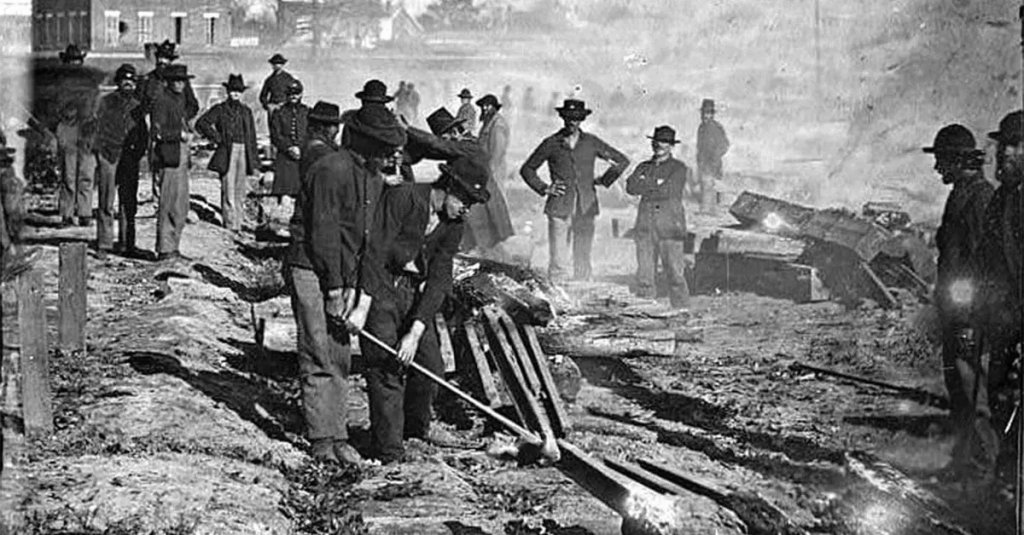The Civil War was one of the early “Total Wars” in world history, where every industrial, military, diplomatic, and economic asset on both sides of the war was pressed into service, and no holds were barred in combat, at least in the last few years of the fighting. For battlefield leaders like Maj. Gen. William T. Sherman, that meant breaking the South in a way it couldn’t be fixed.
When Union officers began serious and successful forays into the Confederacy, they had to decide what infrastructure to protect and use as well as what infrastructure to destroy. If the rails would help Union supply lines, they stayed. But if the Union troops weren’t going to stick around, the rails, boats, and more needed to be destroyed as decisively as possible.
This may seem simple. After all, when it comes to railroads, you can just tear up the tracks and, voila, no train can roll down those tracks until they’re rebuilt.
But there’s a problem. The Union didn’t have the logistics capability to ship all the iron from the rails back north to use. So it would have to remain in place. But when troops tore up the rails and then moved on, Confederate troops and workers would slip right back in and fix the rails within hours or days.

So, soon after Sherman began his drive toward Atlanta and what would eventually lead to his March to the Sea, he issued a new special order to his army.
Major-General McPherson will move along the railroad toward Decatur and break the telegraph wires and the railroad. In case of the sounds of serious battle he will close in on General Schofield, but otherwise will keep every man of his command at work in destroying the railroad by tearing up track, burning the ties and iron, and twisting the bars when hot. Officers should be instructed that bars simply bent may be used again, but if when red hot they are twisted out of line they cannot be used again. Pile to ties into shape for a bonfire, put the rails across, and when red hot in the middle, let a man at each end twist the bar so that its surface become spiral. General McPherson will dispatch General Garrard’s cavalry eastward along the line of the railroad to continue the destruction as far as deemed prudent.
That excerpt is from Sherman’s Headquarters on July 18, 1864, with orders for the next day. Soon, Sherman’s men were marching across Georgia, twisting rails into a spiral so they could never be properly repaired.
The soldiers usually did this by building the bonfire as described in the order and then wrapping the rails all the way around a tree. Twisting the rails around something allowed them to do the deed without having to heat the rails quite as hot. And while bent instead of twisted rails could be repaired, the rails on the trees were bent around back onto themselves, incorporating a small twist and leaving a tree in the middle of it.
Well-twisted rails had to be sent back to a foundry to be melted down, and the South simply did not have enough foundry space and manpower to do that for the majority of the damaged rails.
As Sherman’s army left all these twisted rails in their wake, many of them dangling from trees, the distinctive decor became known as “Sherman’s Neckties,” or bow ties or whatever the viewer’s favorite accessory for the neck was.

This new tactic would sideline some rail lines for the duration of the war. Some would be rebuilt relatively quickly. The town of Meridian, Mississippi, prided itself on restoring its rails in “26 working days.” But that’s still a month that the rail line was out of commission.
Sherman’s aggression would pay off. Where his men marched, the Confederate war machine was often irrecoverably broken. This would eventually be a cost for the U.S. government during reconstruction, but Sherman’s success is partially credited with saving Lincoln’s re-election campaign. And Sherman followed that up by taking Savannah and then burning Columbia.
Look, Sherman really wanted to end the war. And if that meant he would be seen as a monster by the South for generations, well, he could accept that.


